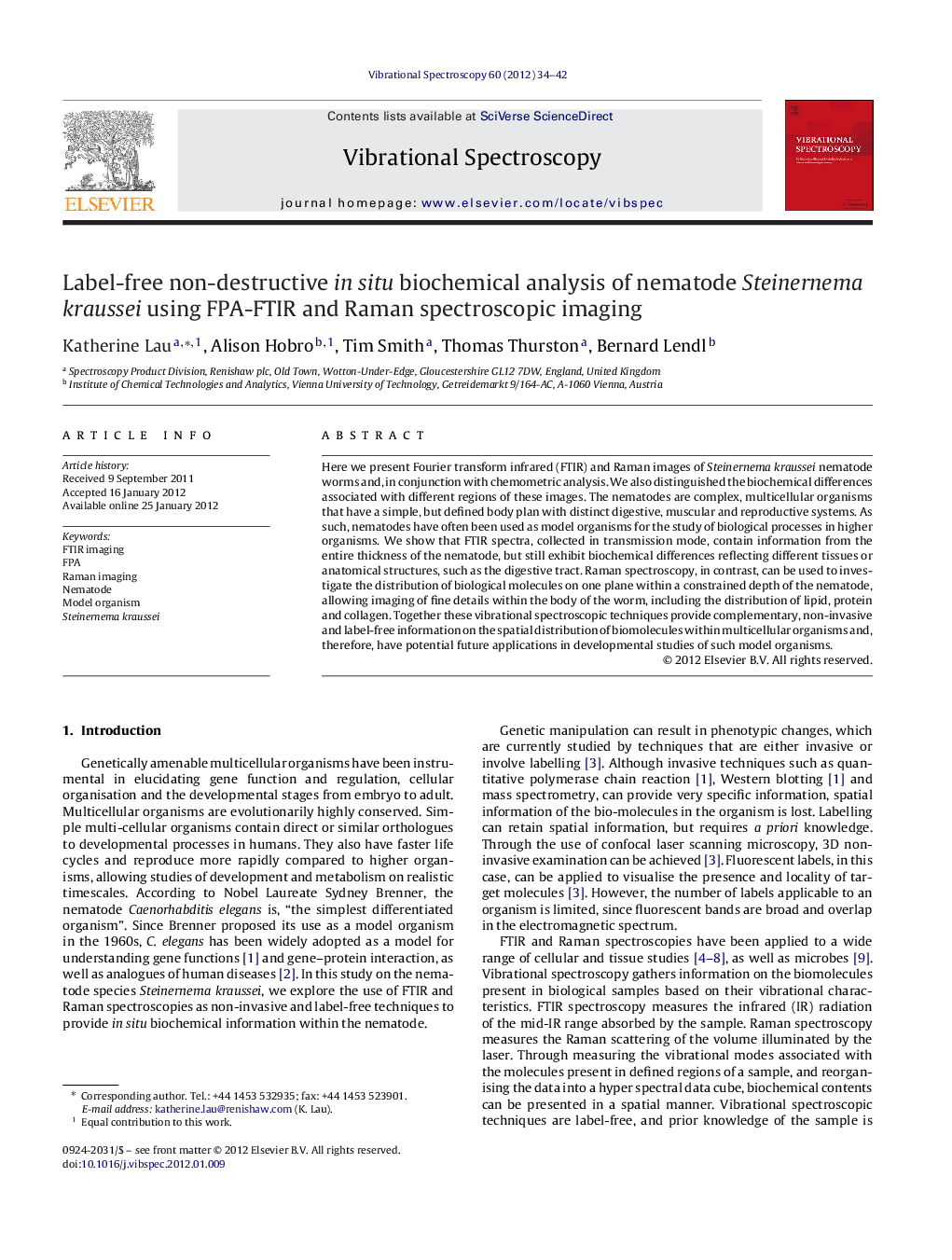| Article ID | Journal | Published Year | Pages | File Type |
|---|---|---|---|---|
| 1249601 | Vibrational Spectroscopy | 2012 | 9 Pages |
Here we present Fourier transform infrared (FTIR) and Raman images of Steinernema kraussei nematode worms and, in conjunction with chemometric analysis. We also distinguished the biochemical differences associated with different regions of these images. The nematodes are complex, multicellular organisms that have a simple, but defined body plan with distinct digestive, muscular and reproductive systems. As such, nematodes have often been used as model organisms for the study of biological processes in higher organisms. We show that FTIR spectra, collected in transmission mode, contain information from the entire thickness of the nematode, but still exhibit biochemical differences reflecting different tissues or anatomical structures, such as the digestive tract. Raman spectroscopy, in contrast, can be used to investigate the distribution of biological molecules on one plane within a constrained depth of the nematode, allowing imaging of fine details within the body of the worm, including the distribution of lipid, protein and collagen. Together these vibrational spectroscopic techniques provide complementary, non-invasive and label-free information on the spatial distribution of biomolecules within multicellular organisms and, therefore, have potential future applications in developmental studies of such model organisms.
